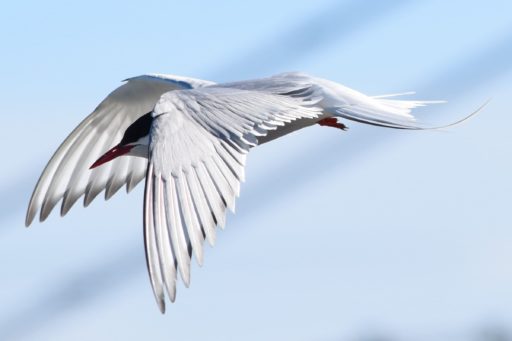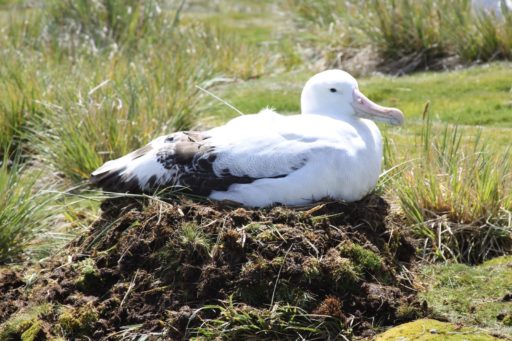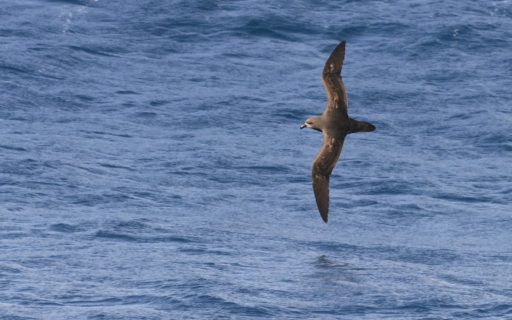All migratory seabirds have one thing in common: on their incredible journeys, they connect different areas of the ocean that may be thousands of kilometers apart. This represents a major challenge for seabird conservation, but reinforces the importance of international collaboration in maintaining a healthy ocean and vibrant marine flyways.

© Beth Clark

© Ana Carneiro
For centuries, only part of these amazing journeys – when seabirds travel near the coast – were known. However, the development of tracking devices in the last few decades has revolutionized our understanding of seabird migration and revealed several major marine flyways.
We now know much more about the importance of winds and oceanic currents – a subject particularly well studied in shearwaters on their trans-equatorial migrations, which follow a “figure-of-8” path driven by the main currents in the Pacific (e.g. the Sooty shearwater) or Atlantic ocean (e.g. the Cory’s shearwater). Like many terrestrial migrants, seabirds sometimes stop to rest and refuel in key areas of the ocean – such as the NACES site – they also prefer to travel more during moonlit nights and sometimes have to navigate around ecological barriers on their routes.
Grey-headed albatrosses can circumnavigate the entire Antarctic on their migrations
Some species of seabirds prefer to travel along the coast like the Sabine’s gull, others cross the middle of oceanic basins such as many gadfly petrels (genus Pterodroma). Some migrate across a latitudinal gradient (North-South or vice-versa) including many shearwaters, petrels, gulls and skuas, while others, including many albatrosses, prefer to travel longitudinally around the Southern Ocean. Some seabirds are highly consistent in their choice of wintering areas from year to year, others less so.
Conservation of migratory marine species

© Eric J. Woehler
Many migratory seabird species are highly threatened with extinction. Albatrosses, masters of long distance travelling across the southern oceans, are amongst the most threatened of all bird groups. Gadfly petrels are also impressive travellers that are now facing extinction, as are some species of crested penguins (genus Eudyptes).
The reasons for these declines vary, but there are some common problems faced by many groups of seabirds. At sea, bycatch and overfishing are frequently a problem – and because these species cross vast areas of the ocean it is difficult for researchers and conservationists to identify the most problematic areas. At the colonies, invasive alien species are the top threat, affecting half of all seabird species in the world from almost all taxonomic groups. Disturbance and direct hunting also threaten many species. Climate change is also playing a role in the declines of seabirds, mostly through changes in oceanographic conditions, increasing frequency of extreme weather events and sea level rise.
Because migratory seabirds cross multiple jurisdictions (and also areas beyond national jurisdiction), the actions required to save them cannot be implemented by a single government.
This is why international political agreements are important. These are platforms for countries across the globe to cooperate and set common goals, putting into place a concerted set of actions to protect our ‘shared’ migratory species wherever they go. The Convention on Migratory Species is an example of an instrument through which States agree on legal regulations and technical guidelines to protect migratory species and their habitats. Others, such as the Convention on Biological Diversity, act as umbrella agreements that set out global goals and targets for biodiversity conservation.
However, thanks to tracking data we know that many migratory seabirds spend most of their time in the high seas. Unless there is appropriate management in areas that go beyond the jurisdiction of any single country, populations of migratory species will continue to decline. The new legal instrument for the high seas, hopefully soon to be adopted, will fill this governance gap for an area that covers half of our planet.